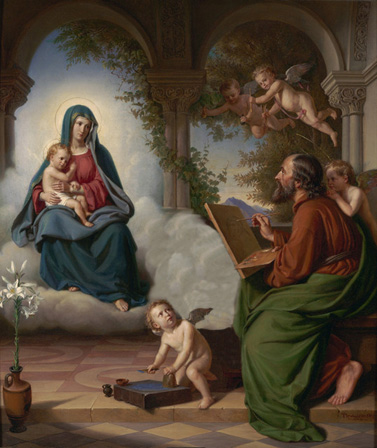
He sat enraptured as she brought the past into living color. He had traveled a long way to see her and he sat motionless, with furled brow, taking careful notes on his parchment. He spent hours asking questions and listening.
Mary’s stories seemed incredible; but Luke had been a Christian long enough to know the stories were true. He was compiling an orderly account for his Excellency Theophilus.
![]()
He wrote a sequel to his gospel, the Acts of the Apostles which is the first history of the fledgling Church, also addressed to Theophilus who was probably a governmental dignitary.
Luke and Acts together span the initial sixty years of the first century. Luke was a physician by trade from Antioch in Syria and he often accompanied Paul on his apostolic journeys (Col 4:14; Philem 24) and was loyal to him until the end (2 Tim 4:11).

Luke’s purpose was to collect the many stories and historical events from various sources and to compile them into a convincing and orderly account so that everyone would believe in Jesus the savior of the world.
Mark’s gospel was a primary source for Luke. Of Luke’s 1149 verses, about 320 are from Mark’s gospel. Luke’s Gospel is the longest book in the New Testament. The date of his writing was around AD 62, probably while caring for Paul under house arrest in Rome (Acts 28:16, 30). …
For the rest of the account, all you need to know about St. Luke, click HERE.


